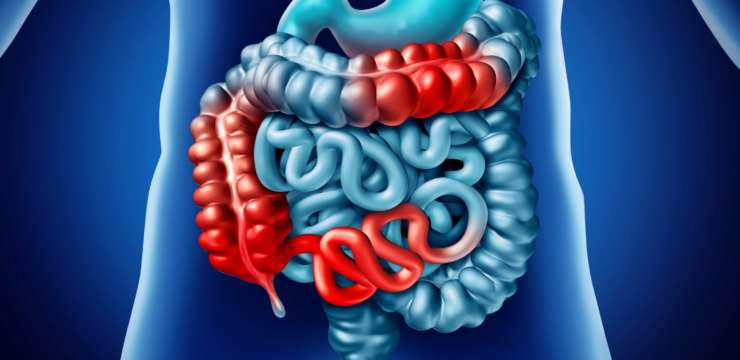
Table of Contents
Anthropometric Assessment
Anthropometric measurement plays a principal role in the patient’s health assessment. Anthropometric measures are an essential part of our clinical findings; body composition analysis provides vital information about our nutritional status. Our body is our vehicle, and as such, it serves as a storage for our energy in the form of fat deposits and muscle mass. Our body comprises other compartments such as intracellular and extracellular water, bone mass, and vital organ mass in addition to muscle and fat tissue. Multiple measurements like body mass index (BMI), body fat percentage (BFP), and lean muscle mass (LMM) associate with many conditions and provide additional insight into their medical and nutritional treatments. Furthermore, the standardized phase angle (SPhA) is a tool that can measure membrane integrity and can predict survival in malignancies and hematopoeitic stem cell transplant patients.
Body Composition
Body composition is measure in many forms and levels throughout the years. Nowadays, bioelectrical impedance analysis (BIA) provides an indirect estimate of our body composition by measuring the impedance a specific tissue (fat, muscle, and bone) exerts against an electric current.Â
Phase angle (SPhA)
The standardized phase angle (SPhA) is, by definition, the ratio of resistance to the reactance. Therefore, it is a measure of how intracellular and extracellular resistance resists the cell membrane-specific resistance, becoming a marker of cellular vitality and integrity. Recent studies consider that SPhA is an essential tool for nutritional assessment and is a highly predictive index of clinical impairments and diseases. Also, SPhA positively correlates with lean body mass. On the other hand, an elevated extracellular-to-intracellular fluid ratio inversely correlates to SPhA.
Average SPhA values correlate to a preserved cellular activity and may reflect a rapid recovery after surgery/injury. Nonetheless, this marker represents a predictive measurement in disease-related malnutrition, sarcopenia, and CVD.
Furthermore, the inverse relation between elevated ECW/ICW ratio and SPhA makes it a better malnutrition predictor. Indeed, an elevation ECW/ICW ratio relates to decreased body cell mass and malnutrition. Furthermore, malnutrition is commonly characterized by low pre-albumin and albumin levels and low scores in nutritional assessment questionnaires like the subjective global assessment (SGA) and the nutrition risk score in ICU patients.
SPhA clinical applications
A study was performed to prove the SPhA effectiveness as a marker of sarcopenia, cachexia, and malnutrition in 412 hospitalized patients with CVD. This study compared SPhA with various biochemical markers, as well as intrahospital nutritional and strength screening tools.Â
CONUT
This study used the nutritional screening tool CONUT that stands for CONtrolling NUTritional status. Conversely, this screening test considers laboratory information, including serum albumin, total cholesterol level, and total lymphocyte count. CONUT is as practical as the Subjective Nutritional Assessment (SGA) to diagnose undernutrition in hospitalized patients, is predictive of the length of intrahospital stay, and assesses immune status. Furthermore, this study concludes that a normal range SPhA can positively relate to the CONUT scores and hemoglobin and albumin levels.
CRP
C- reactive protein is an inflammatory marker produced by our liver and released to the circulatory system in the presence of infection, chronic diseases, or inflammatory responses. However, in nutritional assessment, a CRP level over 5mg can be indicative of cachexia. Besides this, CRP can be used in combination with SPhA to detect malnutrition, cachexia and be reflective of a prolonged intrahospital stay.
SPhA is a novel marker with a wide array of clinical applications. Despite being a multifaceted marker, it provides specific measurements to determine whether the patient has a good prognosis. Also, it is a safe and rapid way to assess health status because BIA can easily measure it. However, SPhA’s applications need to be studied in depth to determine further uses, but it is a promising new perspective.
Nutritional assessment has multiple components. Therefore, the integration of a specialized marker as PhA shed new light ta an element that was difficult to assess with anthropometric measurement. This anthropometric marker’s association to the cellular membrane status and permeability can alleviate the necessities needed in multiple clinical areas. Also, the fact that a BIA device can allow us to have that insight means that we could prevent further complications. – Ana Paola RodrÃguez Arciniega, MS.
References:Â
Yates, Samuel J et al. “The prognostic value of standardized phase angle in adults with acute leukemia: A prospective study.” Cancer medicine vol. 9,7 (2020): 2403-2413. doi:10.1002/cam4.2835
Hirose, Suguru et al. “Phase Angle as an Indicator of Sarcopenia, Malnutrition, and Cachexia in Inpatients with Cardiovascular Diseases.” Journal of clinical medicine vol. 9,8 2554. 6 Aug. 2020, doi:10.3390/jcm9082554
De UlÃbarri, J. Ignacio, et al. “CONUT: a tool for controlling nutritional status. First validation in a hospital population.” Nutr Hosp 20.1 (2005): 38-45.
Additional Online Links & Resources (Available 24/7)Â
Online Appointments or Consultations:Â
bit.ly/Book-Online-AppointmentÂ
Online Physical Injury / Accident Intake Form: bit.ly/Fill-Out-Your-Online-HistoryÂ
Online Functional Medicine Assessment:Â bit.ly/functionmed
Disclaimer
The information herein is not intended to replace a one-on-one relationship with a qualified healthcare professional, licensed physician, and not medical advice. We encourage you to make your own health care decisions based on your research and partnership with a qualified health care professional. Our information scope is limited to chiropractic, musculoskeletal, physical medicines, wellness, sensitive health issues, functional medicine articles, topics, and discussions. We provide and present clinical collaboration with specialists from a wide array of disciplines. Each specialist is governed by their professional scope of practice and their jurisdiction of licensure. We use functional health & wellness protocols to treat and support care for the musculoskeletal system’s injuries or disorders. Our videos, posts, topics, subjects, and insights cover clinical matters, issues, and issues that relate to and support, directly or indirectly, our clinical scope of practice.* Our office has made a reasonable attempt to provide supportive citations and has identified the relevant research study or studies supporting our posts. We provide copies of supporting research studies available to regulatory boards and the public upon request. We understand that we cover matters that require an additional explanation of how it may assist in a particular care plan or treatment protocol; therefore, to further discuss the subject matter above, please feel free to ask Dr. Alex Jimenez or contact us 915-850-0900.  Read More.
Dr. Alex Jimenez DC, MSACP, CCST, IFMCP*, CIFM*, CTG*
email:Â coach@elpasofunctionalmedicine.com
 phone: 915-850-0900
 Licensed in Texas & New Mexico
Disclaimers
Professional Scope of Practice *
The information herein on "Phase Angle and its Association with Inflammatory Markers" is not intended to replace a one-on-one relationship with a qualified health care professional or licensed physician and is not medical advice. We encourage you to make healthcare decisions based on your research and partnership with a qualified healthcare professional.
Blog Information & Scope Discussions
Welcome to El Paso's wellness blog, where Dr. Alex Jimenez, DC, FNP-C, a board-certified Family Practice Nurse Practitioner (FNP-C) and Chiropractor (DC), presents insights on how our team is dedicated to holistic healing and personalized care. Our practice aligns with evidence-based treatment protocols inspired by integrative medicine principles, similar to those found on dralexjimenez.com, focusing on restoring health naturally for patients of all ages.
Our areas of chiropractic practice include Wellness & Nutrition, Chronic Pain, Personal Injury, Auto Accident Care, Work Injuries, Back Injury, Low Back Pain, Neck Pain, Migraine Headaches, Sports Injuries, Severe Sciatica, Scoliosis, Complex Herniated Discs, Fibromyalgia, Chronic Pain, Complex Injuries, Stress Management, Functional Medicine Treatments, and in-scope care protocols.
Our information scope is limited to chiropractic, musculoskeletal, physical medicine, wellness, contributing etiological viscerosomatic disturbances within clinical presentations, associated somato-visceral reflex clinical dynamics, subluxation complexes, sensitive health issues, and functional medicine articles, topics, and discussions.
We provide and present clinical collaboration with specialists from various disciplines. Each specialist is governed by their professional scope of practice and their jurisdiction of licensure. We use functional health & wellness protocols to treat and support care for the injuries or disorders of the musculoskeletal system.
Our videos, posts, topics, subjects, and insights cover clinical matters, issues, and topics that relate to and directly or indirectly support our clinical scope of practice.*
Our office has reasonably attempted to provide supportive citations and has identified the relevant research studies or studies supporting our posts. We provide copies of supporting research studies available to regulatory boards and the public upon request.
We understand that we cover matters that require an additional explanation of how they may assist in a particular care plan or treatment protocol; therefore, to discuss the subject matter above further, please feel free to ask Dr. Alex Jimenez, DC, APRN, FNP-BC, or contact us at 915-850-0900.
We are here to help you and your family.
Blessings
Dr. Alex Jimenez DC, MSACP, APRN, FNP-BC*, CCST, IFMCP, CFMP, ATN
email: coach@elpasofunctionalmedicine.com
Licensed as a Doctor of Chiropractic (DC) in Texas & New Mexico*
Texas DC License # TX5807
New Mexico DC License # NM-DC2182
Licensed as a Registered Nurse (RN*) in Texas & Multistate
Texas RN License # 1191402
ANCC FNP-BC: Board Certified Nurse Practitioner*
Compact Status: Multi-State License: Authorized to Practice in 40 States*
Graduate with Honors: ICHS: MSN-FNP (Family Nurse Practitioner Program)
Degree Granted. Master's in Family Practice MSN Diploma (Cum Laude)
Dr. Alex Jimenez, DC, APRN, FNP-BC*, CFMP, IFMCP, ATN, CCST
My Digital Business Card






